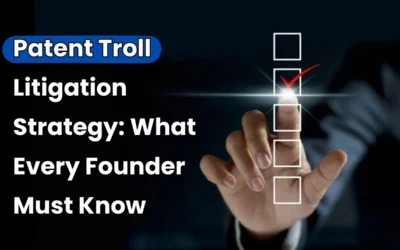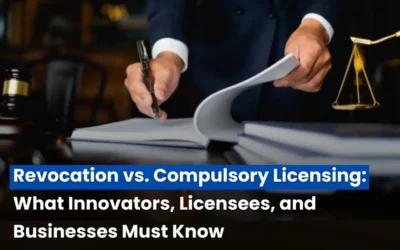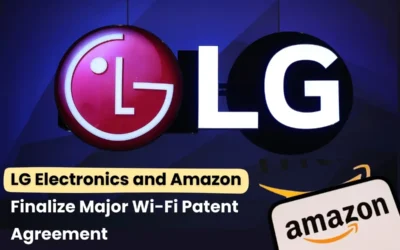
Probably, patent licensing is the most effective as well as efficient process of earning money out of intellectual property. Technologies owned by companies or inventors can produce big money from the licensing of patents to other companies. Licensing of technology to develop a consistent source of revenue, however is not that simple. International patent licensing is highly complicated but equally very rewarding too. In this article, we’ll explore how to create a revenue model from patent licensing internationally, addressing key steps, strategies, and considerations for maximizing your profits.
Meaning of Patent Licensing
Patent licensing gives you the right to allow another entity to use your patented technology after you have been paid enough. Licenses can be either exclusive or non-exclusive. However, in any form, licenses are structured either as lump sums, royalties, or both. The benefit of international licensing is especially attractive in that you now have a way to penetrate and exploit worldwide markets which greatly widens your potential streams of revenue.
Read Also: What Are Utility Models and How to Monetize Them Effectively
Step 1: Build Your Patent Portfolio
You cannot enter the international patent licensing market without first reviewing your patent portfolio. Not all patents are equal, and not all patents will be more useful than others
when it comes to licensing. In general, reviews are based on the following:
- Market demand: How in demand is the technology your patent protects?
- Commercial applicability: Does your technology solve problems that are currently facing commercial businesses operating in different industries?
- Patent strength: Is the patent litigative, enforceable, and strong enough?
Commercialization potential for good revenue model by licensing should come out from strength of the patent.
Step 2: Know About International Patent Law
There is a patent system for each country. You really need to get a sense for the differences and how that applies to your model for international revenues. Patent rights are territorial a patent obtained in one country does not ipso facto, automatically extend it to another country. Planning your international licensing begins with identifying a few key markets: identify where the greatest value for your technology lies.
- File patents internationally: Use the Patent Cooperation Treaty (PCT) in patent filing across a number of countries.
- Know enforcement mechanisms: In case of infringement, know how it’s litigated in each country where you are licensing your patent.By doing this research up front you will avoid possible pitfalls and better navigate your global licensing process.
Step 3: Select your Licensing Partners
You are going to look for the right firms that can license your patent to maximize income. The best firms to partner with should be working in those markets you are targeting and, hence, will have the potential of taking your patented technology into the market. Here’s where you can go to find the best licensing partner for you,
- Market fit: seek those firms that have products or services that exactly fit your patented technology.
- Financial soundness: Ensure that the companies you are licensing to have adequate funds to make royalty payments or a one-off payment.
- Good reputation and credibility: Licensing to companies with a good reputation in the industry will ensure less risk and thereby allow putting through terms relating to the license.
You are sure to receive a long-term international patent licensing strategy for you in case you join such relationships with established companies in the market.
Step 4: Take a flexible licensing agreement
Licensing agreement is a form of the contract that contains the terms and conditions of the patent license. This agreement has to be prepared to suit both parties and different international markets. Some of the essential elements include:
- Payout structure: Lump sum or percentage of royalties, or milestone-based payout. Royalties normally are paid as a percentage of sales, but lump sum payouts are provided in advance.
- Territory: Define the territories or countries for which the license applies.
- Exclusivity: Decide if you need an exclusive licensing agreement wherein only one licensee is allowed to use the patent in the territorial area defined, or nonexclusive, whereby different parties are allowed to license the same technology.
- Performance metrics: Add stipulations that would ensure that the licensee does marketing and utilizing of the patented technology to produce revenues.
A proper license agreement secures your interest and will be sure that all parties fulfill the obligations of theirs.
Step 5: Monitor and Enforce License
After the agreement signing process, monitoring international licensing contracts gets to be a very critical function. Failure to monitor assures not getting the kind of revenue one projects. Period-to-period might be tracking for sale and the performance so you are assured that way. You would be able to exercise your rights when necessary through legal redress in cases of infringement or violations on your rights under the agreement. You can seek the advice of international lawyers or consultants in intellectual property rights so that you will be protected across borders with your patent rights.
Step 6: Adapt strategy to other markets
Once you begin licensing your patent around the world, you realize that every market has its own requirement, and the economic situation is different, and that sometimes the regulations is different. And then while some may want a lump sum upfront, others will want running royalties. You can be very particular with your agreement for licensing and get a better return from every country once you know the difference.
Customize your licensing strategy based on
- Economic conditions: Depending on the markets, companies may not have that much money for high upfront payments, and hence royalties become attractive.
- Cultural differences: Sometimes, certain markets may need longer negotiation periods before finalizing a licensing agreement.
- Legal requirements: There could be some limitations on foreign patent licensing in a few countries, which would influence your revenue model.
Read Also: The Complete Guide to Patent Acquisition Process in India 2025
Conclusion
Revenue from international patent licensing would be garnered through strategic plans, knowledge on the international marketplace, and strict management of their relationships. If a company carefully evaluates its patent portfolio, selects the right partners, and negotiates flexible licensing agreements, then it can really have a financially successful international licensing strategy. International licensing is not exactly a one-size-fits-all concept. Adapt to each market requirement, and evaluate your licensees’ performance periodically to ensure you have steady flows of income based on your IP.









